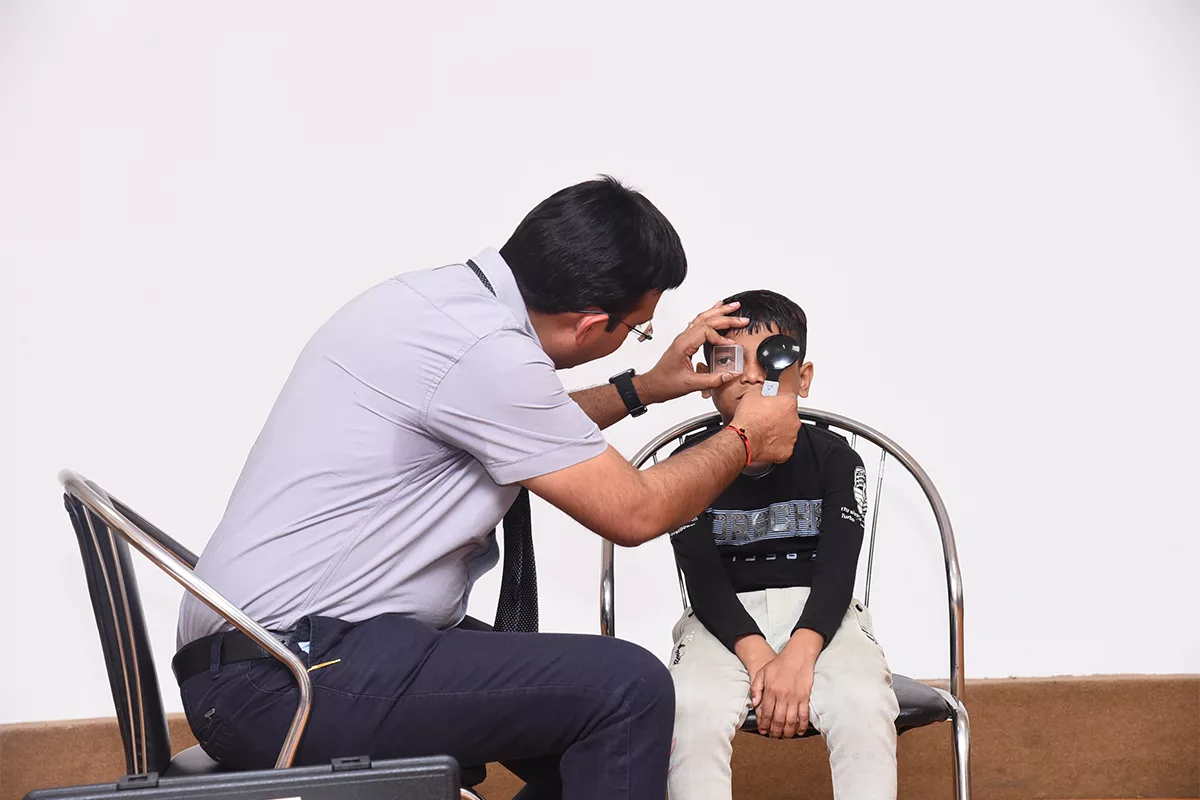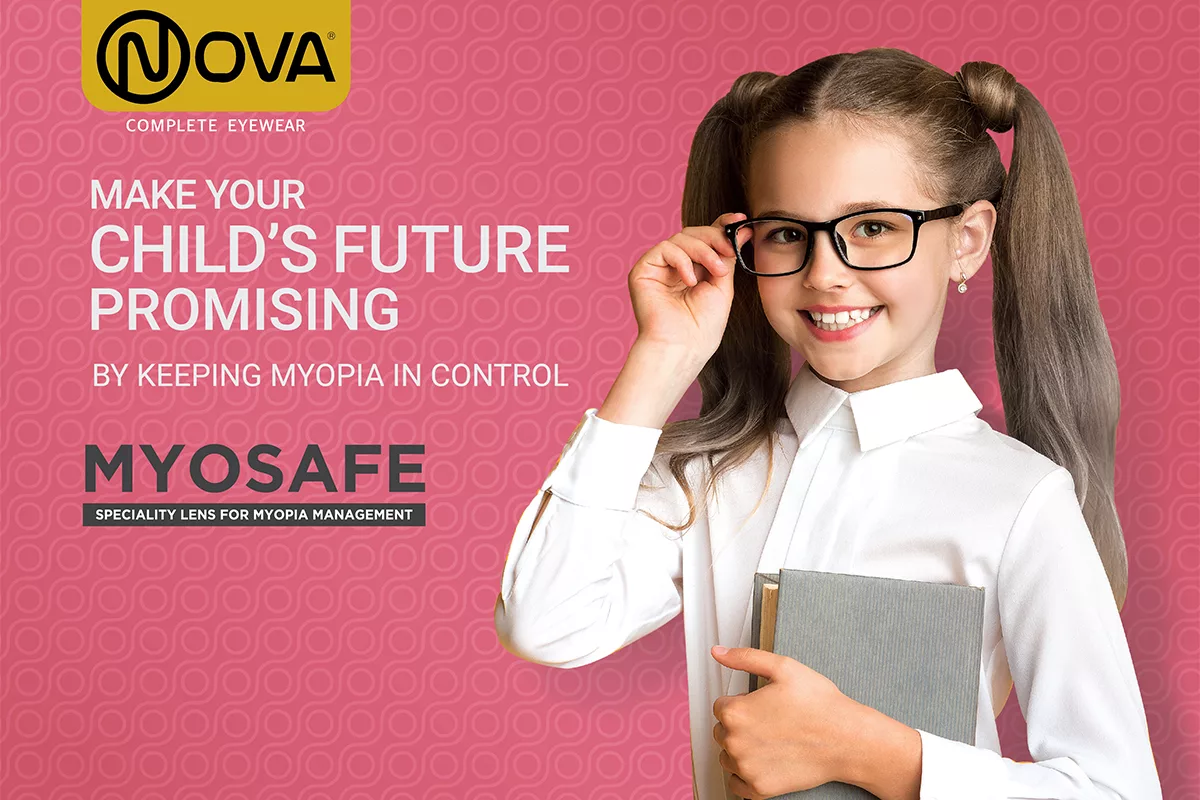Dry Eye Syndrome (DES) can be a huge deterrent for someone who has this condition and still wants to wear contact lenses that basically rest on a watery layer. What is DES and how does one wear contact lenses despite having it? Find out…
Dry Eye Syndrome (DES) is not the rarest of disorders. Very often, a fairly large part of the population, mainly women, suffers from this eye problem, specially after the age of 40. DES is a physicality where the eye dries up, thereby causing great discomfort. The eye has a watery layer called the tear layer which is funded by the tear glands. The tear glands produce tears; they also release a watery substance that lubricates the eyes even when there are no tears. But as we age, this tear production is reduced resulting in what is officially called Kerato Conjunctivitis Sicca (KCS) or ocular surface disease. Or ‘dry eyes’.
The reasons for the drying up of tear glands could be many. Hormonal changes, rheumatoid arthritis or even certain medicines like antidepressants, beta blockers and oral contraceptives. The situation becomes a bit grim when the oil secretion from the eyelids also reduces, thereby adding to the DES. The eyelids have glands that secrete oils which cover the watery layer and kind of ‘fix’ it, thereby reducing its ability to evaporate. But sometimes these oil glands malfunction, like if one suffers from an eye infection such as conjunctivitis. Then the oil secretion is less. Without the protective oily layer, the watery layer evaporates faster.
Dry eyes could sometimes be also due to the prolonged and concentrated viewing involved in an activity, where blinking of the eyes is not as frequent as normal. The decreased blinking also leads to the excessive evaporation of the watery tear layer.
Sometimes contact lens wear increases the risk of dry eye syndrome. Even refractive surgery like Lasik could cause dry eyes. Dry eyes can also be potentially dangerous as it could be an indication of a Vitamin A deficiency or a Hepatitis C infection or even diabetes.
Symptoms Of Dry Eyes
Scratchy or gritty eyes, a burning sensation in the eyes are all symptoms of dry eyes. Again, these symptoms are far too commonplace. But if these symptoms persist, then perhaps it is time to visit the eye doctor. Sometimes though the symptoms could be a little more disturbing. Like super sensitivity to light or blurred vision. Often these symptoms are aggravated by windy weather or in extreme climatic areas. Funnily enough, sometimes extreme cases of ‘dry eyes’ may cause the tear glands to over-function, causing a tear spill. But once the histrionics are over, the eyes dry up once again.
Dry Eyes And Contact Lenses
When you wear contact lenses, they rest on the watery layer. But if you have ‘dry eyes’ then obviously the contacts are going to be bothering you. While there is one line of thought that says that contact lenses are avoidable for ‘dry eyes’ patients, a newer kind of thinking says that if proper care is taken, then wearing contact lenses is not an issue with those who have ‘dry eyes’.


Here, we talk of three things. First up are basic home remedies for ‘dry eyes’. Second are a couple of medicinal remedies. And third is a complete guide to cleaning contact lenses, so that trouble is restrained at its minimum.
Basic Ways To Treat Dry Eyes
While medically there are several ways to deal with Dry Eyes, there are some easy-to-do home therapies that can also work really well.
- Use a humidifier. Room temperatures can often hit a ‘dry’ low with excessive usage of room heaters or furnaces. Ditto with high usage of air-conditioning in the summer. Both can reduce the humidity in the air leading to dry eyes. So use a humidifier to even out the extremities.
- Reduce speeding fans. For those living in regions where ceiling fans are common – control the speed to control the dryness in the air and in the eyes.
- Massage eyelids. Use warm compresses for the eyes occasionally. This is really helpful for malfunctioning eyelid glands that produce and secrete oil. The warmth of the compress and the gentle massage urges the oils to flow easily.
Medicinal Methods:
Lubricating eye drops and gels: Applied three to four times a day, they moisten the eyes as well as lubricate the surface. If one wants to use these drops more than five times a day, it is best to use a preservative free solution.
Artificial inserts: Sometimes doctors recommend an artificial insert that is worn like a contact lens in the eye. The insert has cellulose that stabilises and thickens the watery layer of the eyes. Needless to say, only on doctor’s recommendation.
Lenses with lower water content: Switching to a lens with lower water content or a rigid gas permeable lens may help with dry eyes.
Silicone hydrogel lenses are better: These have quality wetting agents and can actually reduce the discomfort.
Complete Guide To Contact Lens Cleaning
Range, sophistication in the manufacturing process and techniques for caring of lenses have taken a quantum leap in the recent years. There are dozens of products in the market that work as options in the lens cleaning process.
What’s more, there are solutions for specific purposes. Like one-bottle solutions that can be used for general cleaning or solutions that have been developed specially to deal with specific issues. Like solutions to clean protein deposits or preservative free solutions for extra sensitive eyes, or solutions that help lubricate dry eyes, making lens wear easier. But whatever the solution used, you must take good care of your contact lenses.
Taking Care Of Your Lenses
While lens care has been simplified, there are some basics that need to be adhered to. Here’s a quick dekko.
Step One: Most important: Before you switch to a new lens care system, it is always better to consult with your eye doctor and get a clear directive from him about the lens care solution most suited for you. For instance, even if the solution pack cover promises multiple benefits, there might be a danger of incompatibility. This could lead to a fungal infection at the very least. Therefore, while the change may appear insignificant, it is always better to have it factored.

Step Two: The lens cleaning procedure is three-pronged. The first is cleaning, then rinsing and finally disinfecting. Before cleaning, ensure that your hands are washed and preferably not with a multi-layered or deep moisturising soap as the oil in the soap is not good for the lenses. Also, after washing your hands wipe them with a soft cotton cloth. A towel or a dry-napkin might leave behind remnants of lint that may get transferred to the lens which in turn might scratch your eye.
Step Three: Cleaning. Over a period of time, the eye produces what is called ’build-up’, or eye discharge. This could be remnants of rheum, the sticky substance discharged during sleep and which deposits itself in the corner of the eyes. Or it could be eye protein, deposits that are released by the eye nerves and settle in the eyes. This does not necessarily happen during sleep, it is a gradual process that is washed away when you wash your eyes. But if you are a contact lens wearer, then these deposits could settle in the contacts causing itching and irritation. Apart from the ‘build-up’, there would be some grime from the air that has found its way into the belly of the lens. Therefore, thorough cleaning of the lenses is a must.
Take one lens and clean it with a small portion of the lens solution. Then, take a few drops of the solution in your palm and gently rub the already once-cleaned lens. There are certain products whose labels read ‘No Rub’, but doctors recommend that you rub the lens. This loosens any stubborn grit that might be sticking to the lens.
Step Four: Rinsing. Once you have cleaned the lens, rinse it. Every cleaning lotion mentions the time you should take to rinse the lens. Ensure that you toe the line by doing just that. The cleaning agent basically disinfects the lens and one solution’s disinfecting period might differ from the other. Once cleaning of the first lens is complete, repeat this entire process with the other lens.
Step Five: Disinfecting. When you are dealing with something as fragile as the eyes, you must take extra care. It is important to disinfect anything that comes in touch with your contact lenses. Therefore, after cleaning and rinsing your lenses, disinfect the lens holder by throwing off any old solution that may be lying in the lens holder. Then, after thoroughly cleaning the lens holder, place the cleaned lenses in it and fill it with fresh lotion.
The Five Commandments Of Contact Lens Care
- Never touch the tip of a solution bottle to any surface, like a table or your own body surface. It may contaminate the solution.
- Do not use tap water to clean as it carries a microorganism called Acanthamoeba that can cause an eye infection. Use only the recommended solution.
- Clean and disinfect lenses once a day and discard the contact lens case every month.
- Never use eye drops/solutions while wearing contact lenses, other than those recommended.
- Never wear lenses used by others, not even cosmetic lenses.
Credit:
With inputs from Dr Sandip Mitra, MD FRCS,
HOD, Eye Department, Al Zahra Private Hospital










